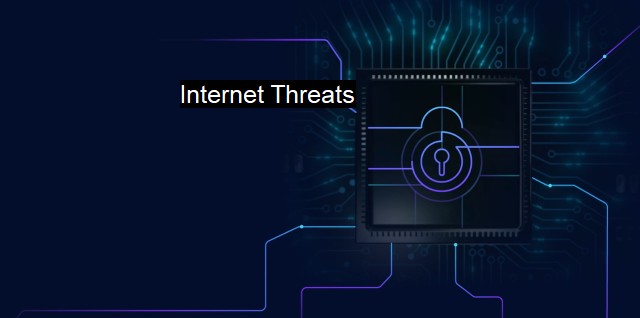What are Internet Threats?
The Growing Threat of Cybercrime: Understanding and Protecting Against Internet Threats
Internet threats refer to potential dangers or ongoing proceedings or actions that can result in a compromise of an individual or organization's security when they are using or connected to the internet. These threats jeopardize the confidentiality, integrity, or availability of information system-based resources, constituting a substantial chunk of cybersecurity troubles. As we studiously engage in the online world, evolving internet threats continually linger, jeopardizing our cybersecurity and calling for effective countermeasures like antivirus software.Firstly, understanding various categories of internet threats is pivotal. Malware is the first category that refers to malicious software used to compromise computers and other related systems. This category encapsulates viruses, worms, Trojan horses, key-loggers, ransomware, adware, and spyware. For instance, viruses which multiply and spread to other computers, damaging files or hampering system operation, and ransomware which locks access to the user's system until a ransom payment is made.
Secondly, phishing is another common internet threat aiming to harvest sensitive data such as passwords, credit card numbers, and other personal information. It deceives the user into believing that they're interacting with a trusted entity. Often, victims receive an authentic-looking email or message with a deceptive link that redirects to a fake website that harvests entered personal information.
Similarly, pharming is another sophisticated threat where a person is redirected to an imposter website even if the correct web address was entered. It compromises the Domain Name System (DNS) servers and redirects legitimate traffic to counterfeit websites. Also, not forgetting botnets, which are networks of these 'zombie' computers made using an amalgam of malware-infected devices working to achieve a common malicious agenda led by an attacker.
Denial of Service (DoS) and Distributed Denial of Service (DDoS) attacks are threats that aim to make a network, service, or resource unavailable for its intended users. These attacks overwhelm the targeted system with traffic or requests to exude malfunction and subsequent unavailability. Further, advanced persistent threats, zero-day threats, and hybrid threats are more strategic and aggressive in nature and use a sequence of attacks over passing time, with exploits attacking undisclosed vulnerabilities and mixed methods fusing diverse attack modes.
On another note, identity theft is a rising internet threat and is handled largely on the dark web. Significant data, like usernames, passwords, Social Security numbers, and credit card numbers, are often stolen and sold on the darknet to facilitate cybercrimes like frauds, scams, and illegal activities.
Threats may also pertain to insider threats with employees leaking crucial business information, direct hacking, deepfake technologies, and free public WiFis that can skimp on security protocols and unwittingly handover data to unscrupulous users or hackers.
Therefore, mitigating these internet threats is a prime concern that's efficiently addressed by cybersecurity, engaging a combination of techniques designed to protect systems and data from internet threats. From dozens of strong methods, antivirus software use turns out to be pivotal. They consistently scan the computer for known threats and protect against unknown risks through heuristic analysis, recognizing activities that look like virus infections and other prepossessing breaches.
Most antiviruses are configured to automatically update their virus definitions database from the web, ensuring immunity from the newest viruses on the block. They combat prevalent internet threats like viruses, worms, Trojans, ransomware, and others, seeking to either replicate or affect the operations of the user. prompt patching and system version updating are advocated along with trained discernment of phishing and other scams. browse sagaciously, update frequently, and use potent antivirus software for the best security from internet threats.

Internet Threats FAQs
What are some common types of internet threats?
Some common types of internet threats include viruses, malware, phishing scams, ransomware attacks, and hacking attempts.How can I protect myself from internet threats?
You can protect yourself from internet threats by keeping your antivirus software up to date, avoiding suspicious websites and emails, using strong passwords, and regularly backing up your important data.What should I do if I think my computer has been infected with a virus?
If you think your computer has been infected with a virus, you should immediately run a virus scan using your antivirus software. If the scan detects a virus, quarantine and delete the infected files. You should also change any passwords that may have been compromised.What are some signs that my computer may have been hacked?
Some signs that your computer may have been hacked include slow performance, pop-ups or strange messages, unauthorized access to your accounts, and changes to your desktop or browser settings. If you notice any of these signs, it's important to take immediate action and seek the help of a cybersecurity professional.| | A | | | B | | | C | | | D | | | E | | | F | | | G | | | H | | | I | | | J | | | K | | | L | | | M | |
| | N | | | O | | | P | | | Q | | | R | | | S | | | T | | | U | | | V | | | W | | | X | | | Y | | | Z | |
| | 1 | | | 2 | | | 3 | | | 4 | | | 7 | | | 8 | | |||||||